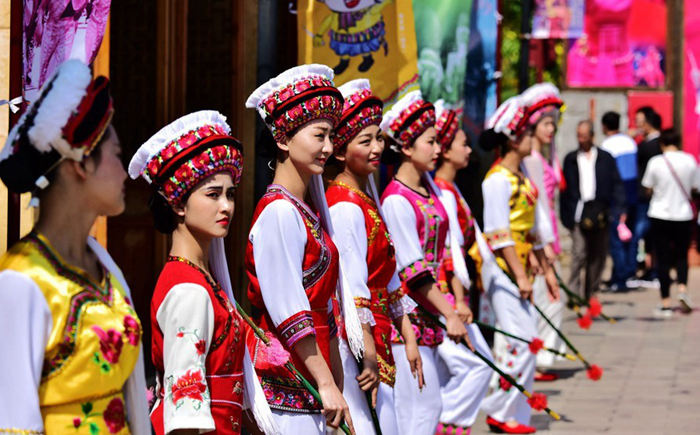The Chinese nation is officially defined by the government of the People’s Republic of China as the general designation of the 56 recognized ethnic groups within the territory of the People’s Republic of China. The Chinese nation is the only community name that represents the modern Chinese nation.
The Chinese nation consists of 56 ethnic groups. The han nationality is the main ethnic group in China, accounting for 91.51% of the total population. Another 55 ethnic groups, accounting for 8.49%. The han nationality and the 55 ethnic minorities make up the great Chinese nation. China is a unified multi-ethnic country with the han nationality as the main body and 56 ethnic groups as a whole.

55 Ethnic Groups in China
The 55 minorities ethnic groups are Achang, Bai, Bonan, Bouyei, Blang, Dai, Daur, Deang, Dong, Dongxiang, Dulong, Ewenki, Gaoshan, Gelao, Hani, Hezhe, Hui, Jing, Jingpo, Jinuo, Kazak, Kirgiz, Korean, Lahu, Li, Lisu, Luoba, Manchu, Maonan, Menba, Miao, Mongolian, Mulao, Naxi, Nu, Oroqen, Ozbek, Pumi, Qiang, Russian, Salar, She, Shui, Tajik, Tatar, Tibetan, Tu, Tujia, Uigur, Wa, Xibe, Yao, Yi, Yugur, Zhuang.
China’s Autonomous Regions
The system of regional ethnic autonomy refers to the system of regional autonomy, the establishment of organs of self-government and the exercise of autonomy in areas where ethnic minorities live in compact communities under the unified leadership of the state. The system of regional ethnic autonomy is one of the basic political systems in China and an important part of the construction of socialist politics with Chinese characteristics.
The system of regional ethnic autonomy means that in the big family of the unified motherland and under the unified leadership of the state, corresponding organs of self-government shall be established on the basis of areas where ethnic minorities live in compact communities to exercise the right of autonomy, manage the internal affairs of their own ethnic groups and regions and exercise the right of being masters of the country.
China has five autonomous regions including Xinjiang Uyghur Autonomous Region, Tibet Autonomous Region, Inner Mongolia Autonomous Region, Guangxi Zhuang Autonomous Region, Ningxia Hui Autonomous Region. In this five autonomous regions, travelers can explore many minorities and their life.
More about China Minority Exploration Tours, click here
Leave a Reply